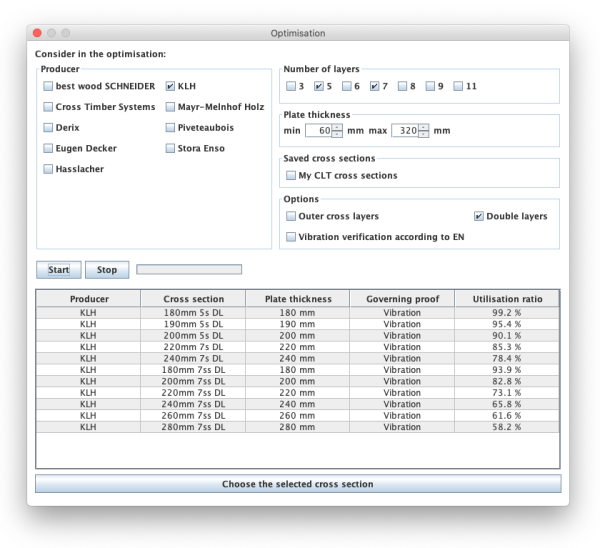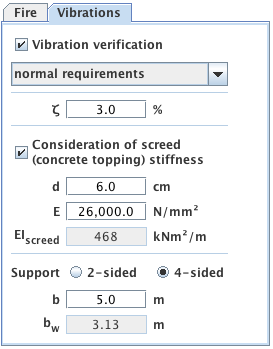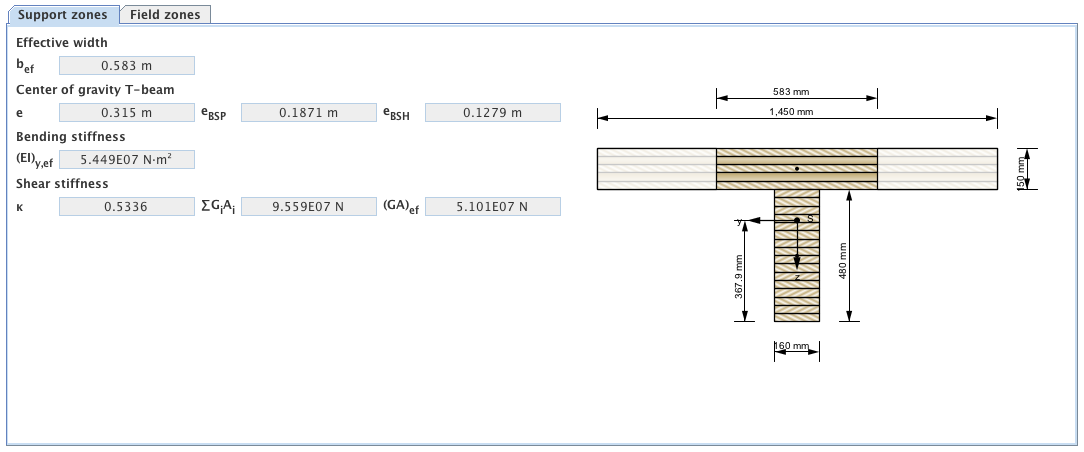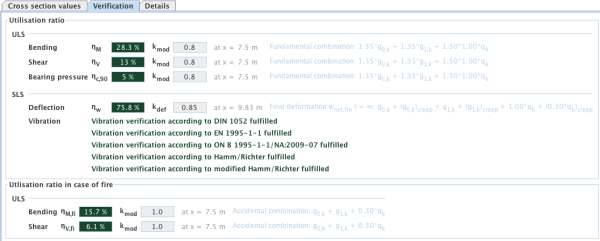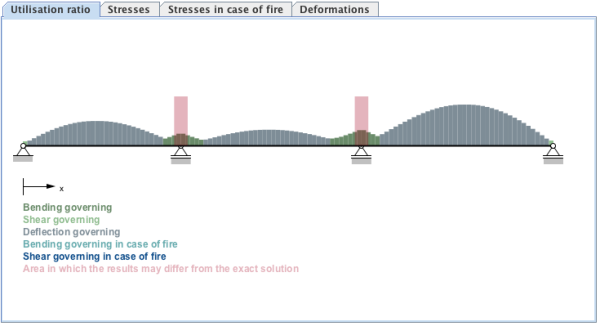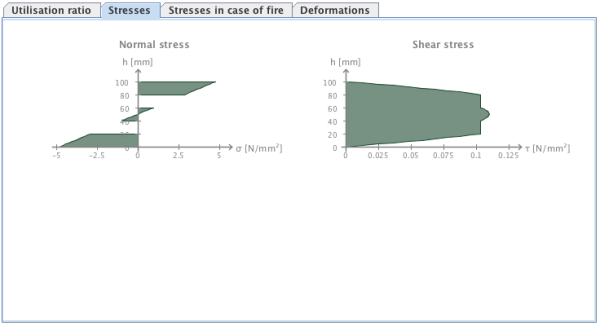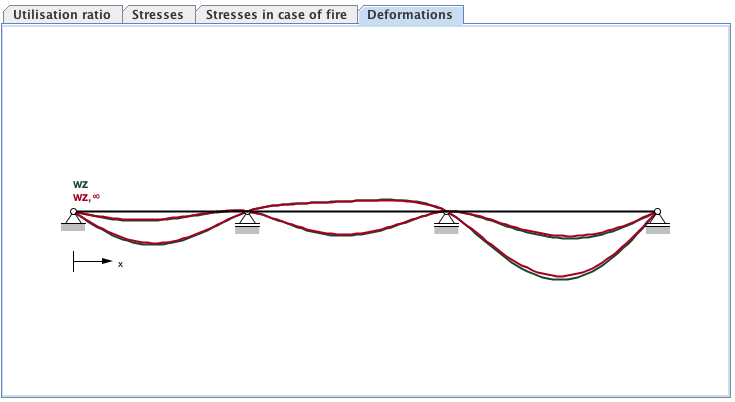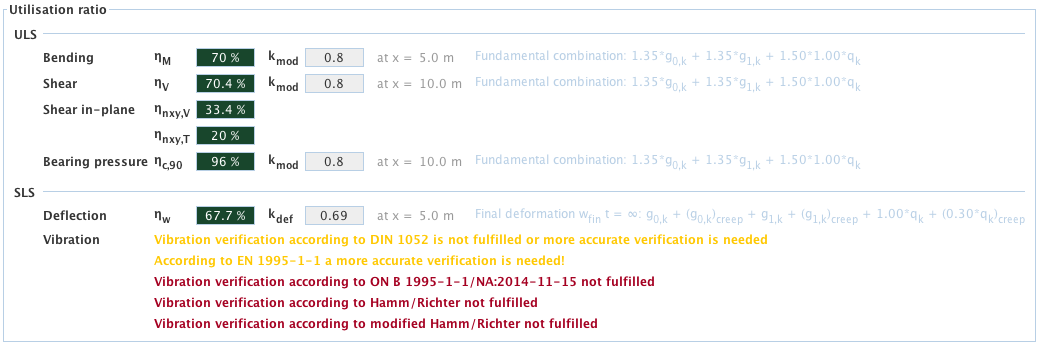Table of Contents
Module "Ribbed slab"
Input data
The input is divided into:
- general information about the project and the considered structural element
- definitions of the structural system
- definitions of the cross section
- input of the loads
- informations about vibration parameters
- calculation options
General
The input field "General" defines the service class. It is only allowed to use CLT elements in areas of service class 1 and 2.
- Service class 1 (interior service condition) is in general consistent with a common utilisation of living spaces.
- Service class 2 (protected exterior service condition) is generally used for open but roofed structures.
Structural system
In this release, only single span girder can be calculated. The supporting width and span (via x-value in the table) can be defined within this input field.
Cross section
The input of the CLT cross section is the same as for the Module "CLT-Plate 1D - Continuous beam".
Die Definition des Rippenquerschnittes (Rechteckquerschnitt aus BSH oder Vollholz) erfolgt über die Eingabe der Höhe und Breite der Rippe sowie Auswahl des Materials.
Loads
The input is the same as for the Module "CLT-Plate 1D - Continuous beam", but limited to distributed loads.
Fire
In this module, currently no structural fire design is possible.
Vibrations
The input is the same as for the Module "CLT-Plate 1D - Continuous beam".
Results and Output
Cross section values
The stiffness values of the CLT-plate and the GLT-beam as well as the shear spring, which are shown in the upper section of the tab "cross-section values" are parameters for the determination of the effective width.
Underneath, the effective width, the center of gravity as well as the bending and shear stiffness of the T-beam at the supports and in between are shown.
Summary of the results
The summary of the results is analogous to the Module "CLT-Plate 1D - Continuous beam".
However, there are differences for ULS - shear, since for the CLT-flange also the in-plane shear has to be considered.
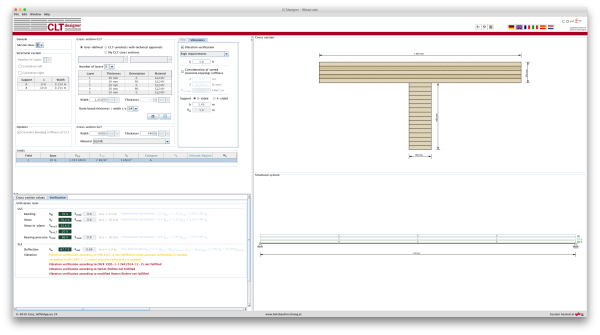

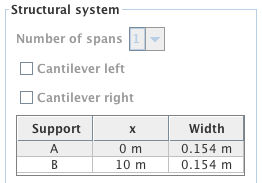
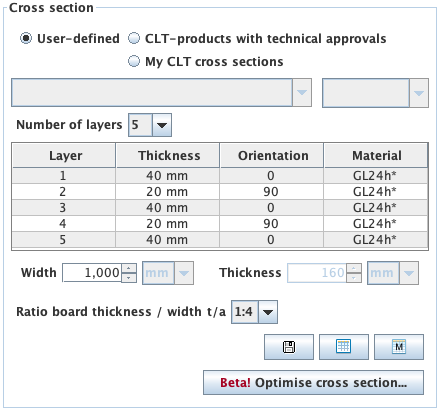
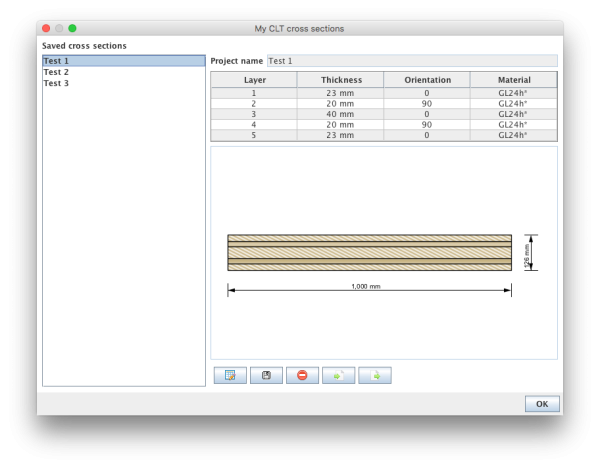
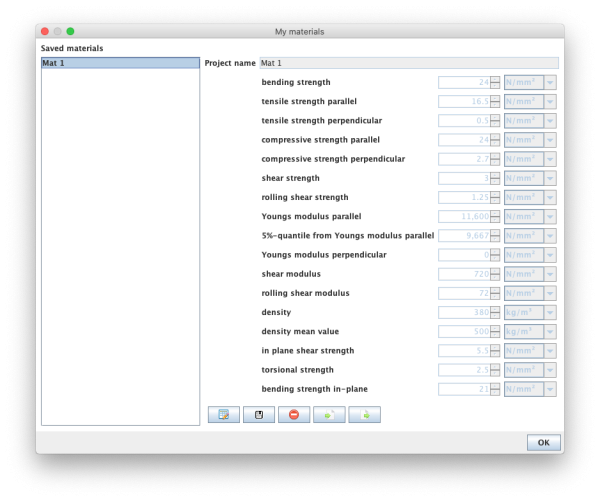
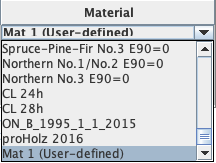
 to display the window for layup optimization.
to display the window for layup optimization.
